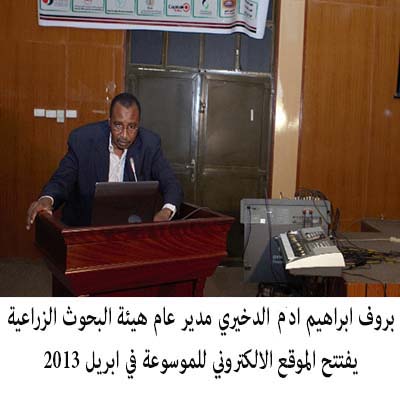انتاج المحاصيل
Effect of irrigation water quantity and tillage treatment on forage
sorghum [Sorghum bicolor (L). Moench] cultivar Abu Sabein in saltaffected
soil of Sudan.
Salah Abdel Rahman Salih1, Abdel Moneim Elamin Mohamed2 and Mohamed
Abdel Mahmoud Elsheikh3
Abstract: This study was conducted during 2009 and 2010 summer seasons at the Demonstration Farm of the Faculty of Agricultural Technology and Fish Science, University of Neelain (Jebal Awlia area) south of Khartoum to investigate the most suitable irrigation water quantity and the best tillage treatment for growing [Sorghum bicolor (L). Moench] cultivar Abu Sabein in salt affected soil.The irrigation water quantities used were crop water requirement (CWR) + 10% or 20% of the crop water requirement as a leaching fraction (LF). Three tillage treatments namely, disc plow, chisel plow, disc harrow were used and zero tillage as a control. The variables compared were plant height, number of leaves/plant, ,stem diameter, leaves/stem ratio, fresh and dry weight and water use efficiency. The soil of the site was found to be non saline, non sodic but calcareous soil with pH ranged from 7.5 to 8.0, SAR, from 1.7 to 10.0, ECe, from 0.6 to 3.0 ds/m,CaCO3, from 1.6 to 3.8. Average bulk density value obtained was 1.28 g/cm3 ,average field capacity value obtained was 22.8% on dry weight basis, soil texture of the all depths is sandy clay loam. The results showed that CWR + 20% LF gave higher results than CWR + 10% LF, also chisel plow gave higher values than the other tillage treatments for all the variables during the two seasons


